The Southeast Asia War Gallery in the National Museum of the United States Air Force in Dayton, Ohio includes several cargo planes.
With regard to the Southeast Asia War:
A product of the Cold War, the Southeast Asia War (1961-1973) began with communist attempts to overthrow non-communist governments in the region. United States participation in the Southeast Asia War resulted from the policy of "containment," which aimed to prevent communism from expanding beyond its early Cold War borders. The containment strategy seldom led to major combat, but as with the Korean War (1950-1953), the US committed large military forces to protect an allied, non-communist government.
The main U.S. goal in the Southeast Asia War was to protect South Vietnam -- initially from a local communist insurgency and later from conquest by communist North Vietnam. The U.S. also hoped to prevent the spread of communism to other nearby countries. Although popularly known as the Vietnam War, U.S. efforts included military action not only in South and North Vietnam, but also in neighboring Southeast Asian countries.
Fairchild C-123K Provider
According to the Museum:
The Provider was a short-range assault transport used for airlifting troops and cargo to and from small, unprepared airstrips. The rugged C-123 became an essential part of U.S. Air Force airlift during the Southeast Asia War, where it flew primarily as an in-theater airlifter and a Ranch Hand sprayer.
Designed by the Chase Aircraft Co. just after World War II, the C-123 evolved from earlier large assault glider designs. The prototype XC-123, basically a glider powered by two piston engines, made its initial flight in 1949. A second prototype was built as the unpowered XG-20 glider. Chase began manufacturing the C-123B in 1953, but the contract was transferred to Fairchild, which built about 300 C-123Bs.
Between 1966 and 1969, 184 C-123Bs were converted to C-123Ks with the addition of two J85 jet engines. These jet engines increased the C-123's payload weight by a third, shortened its takeoff distance, improved its climb rate, and gave a much greater margin of safety should one of the piston engines fail.
Providers entered service with the USAF's 309th Troop Carrier Group (Assault) in 1955, and this unit conducted several practice combat landings with U.S. Army troops. Other C-123Bs and C-123Js supplied USAF sites in arctic regions from the late 1950s into the mid-1970s.
The C-123's most important service, however, was during the Southeast Asia War. In January 1962, the first of many Providers were sent to South Vietnam to start the Ranch Hand defoliant program. Shortly after, a squadron of standard C-123Bs arrived to provide mobility to the South Vietnamese Army. By the fall of 1964, there were four USAF C-123B squadrons in Vietnam flying airlift and airdrop missions.
Providers constantly flew troops and supplies to small, dirt airstrips at isolated bases in South Vietnam. Their relatively large cargo hold and excellent short field performance made them essential to holding these widely-scattered bases. The CIA's Air America also operated about 35 C-123s in Laos.
C-123s sometimes flew other types of missions. Standard Providers flew night flare dropping missions to expose enemy attacks. Specially-modified C-123s flew night operations with floodlights, radar, and night-vision equipment.
As the war in Southeast Asia wound down, the U.S. transferred some of its Providers to the South Vietnamese Air Force and the Royal Thai Air Force. The remaining USAF C-123s were transferred to the Air Force Reserve, which flew them into the mid-1980s. Other operators of the Provider included the U.S. Coast Guard, the Philippines, South Korea and Venezuela.
This aircraft has a top speed of 240 mph, a range of 1,825 miles, and a ceiling of 28,000 feet. It could carry 60 fully equipped troops, 50 stretcher patients or 24,000 lbs. of cargo.
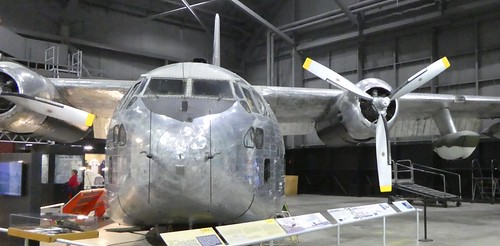
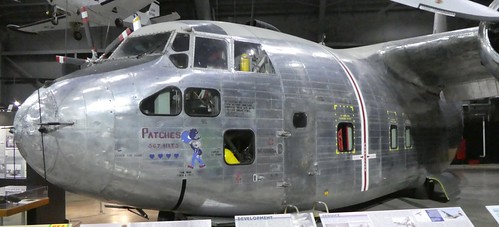
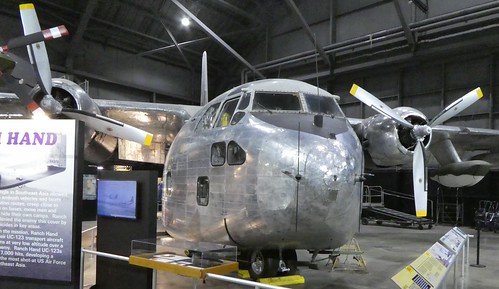
 The aircraft took almost 600 hits in combat, and it was named Patches for the damage repairs that covered it. Moreover, seven of its crew received the Purple Heart for wounds received in battle.
The aircraft took almost 600 hits in combat, and it was named Patches for the damage repairs that covered it. Moreover, seven of its crew received the Purple Heart for wounds received in battle.



DeHaviland C-7A Caribou
According to the Museum:
The C-7A was a twin-engine, short takeoff and landing (STOL) utility transport built by De Havilland Aircraft of Canada, Ltd. It was used primarily for tactical airlift missions from short, unimproved airstrips in forward battle areas. It could carry either 26 fully equipped paratroops, 20 litter patients, or more than three tons of equipment.
The Caribou made its first flight in 1958, and the U.S. Army flew several prototypes for evaluation. In 1961 De Havilland delivered the first 22 out of a total of 159 C-7s to the Army. Originally designated AC-1, the aircraft was redesignated CV-2 in 1962, and it retained that designation for the remainder of its Army service.
In January 1967, when responsibility for all fixed-wing tactical transports was transferred to the U.S. Air Force, the Caribou received the designation C-7. During the Southeast Asia War, the Caribou's STOL capability made it particularly suitable for delivering troops, supplies, and equipment to isolated outposts.
This aircraft has a top speed of 216 mph, a cruising speed of 152 mph, a range of 1,175 miles, and a ceiling of 24,800 feet.
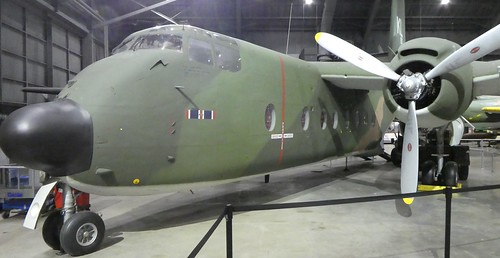
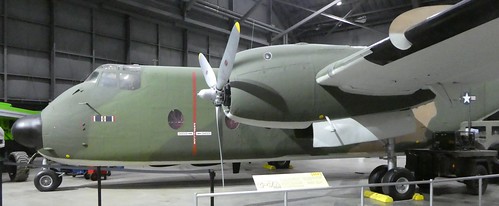
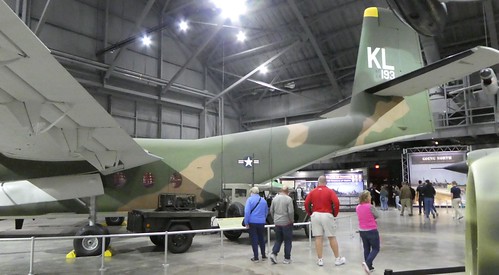
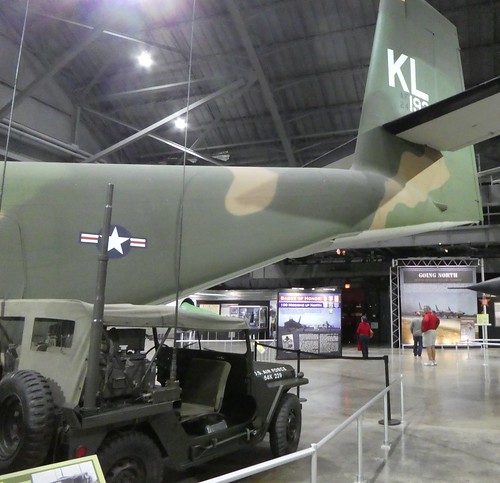
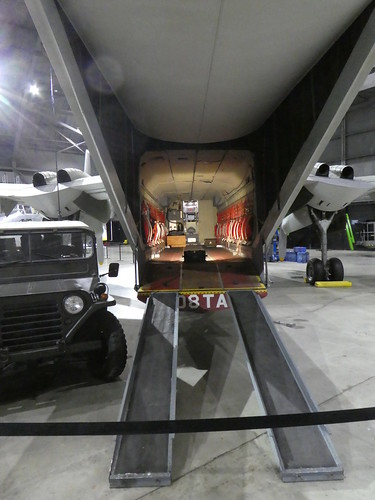
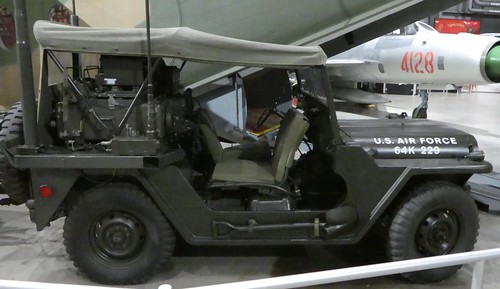

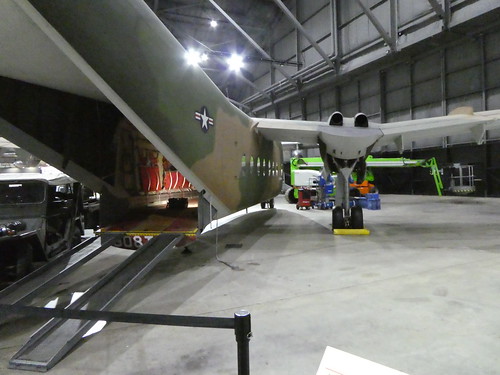
More Air Force Museum Displays
Air Force Museum: The Memphis Belle (photo diary)
Air Force Museum: North American B-25 B Mitchell (photo diary)
Air Force Museum: Bockscar, the aircraft that ended World War II (photo diary)
Air Force Museum: World War II bombers (photo diary)
Air Force Museum: The Valkyrie (photo diary)
Air Force Museum: Douglas C-124 Globemaster (photo diary)
Air Force Museum: B-29 Walk-through Fuselage (photo diary)
Air Force Museum: Space Gallery Aircraft (photo diary)


